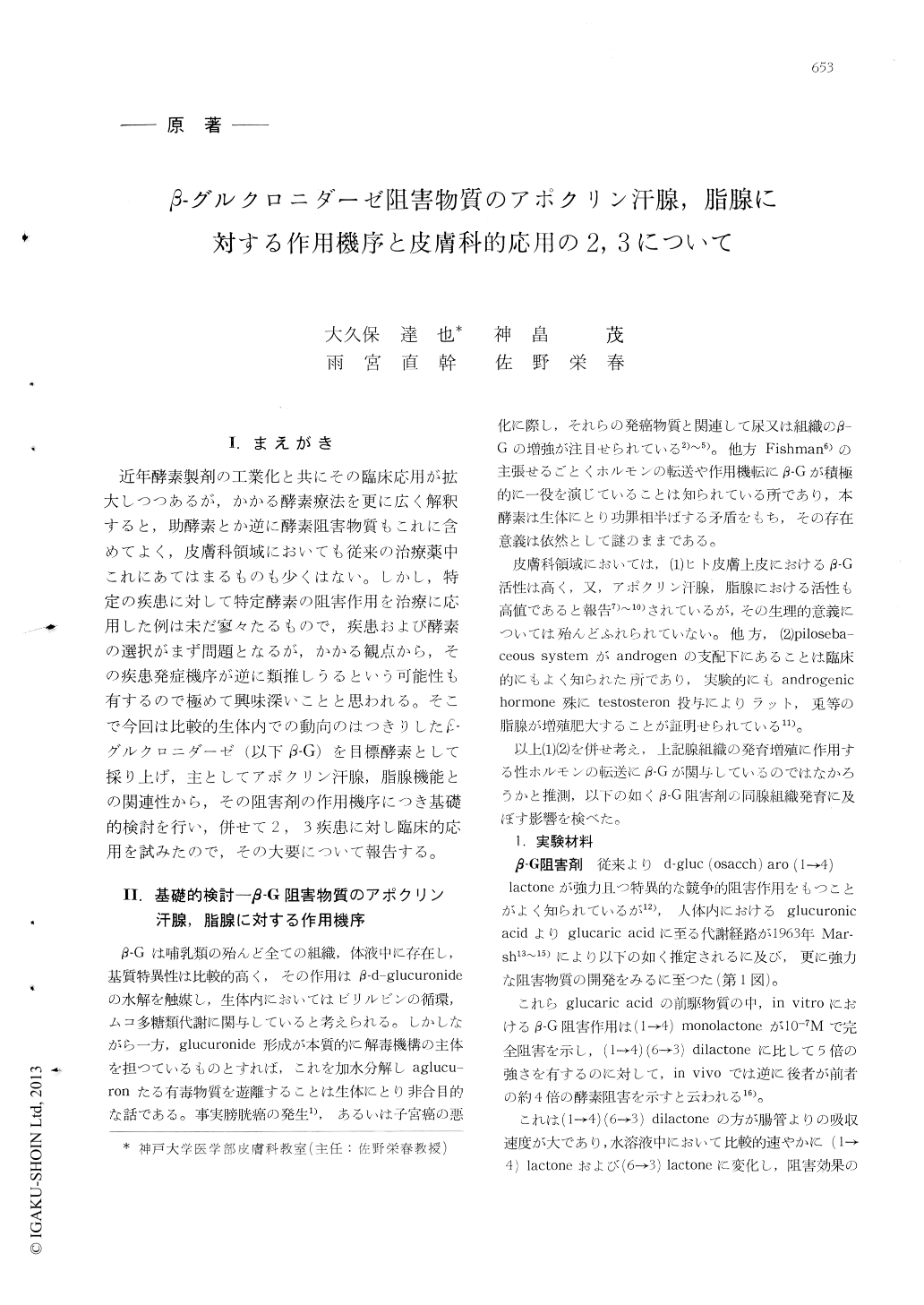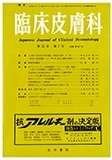Japanese
English
- 有料閲覧
- Abstract 文献概要
- 1ページ目 Look Inside
I.まえがき
近年酵素製剤の工業化と共にその臨床応用が拡大しつつあるが,かかる酵素療法を更に広く解釈すると,助酵素とか逆に酵素阻害物質もこれに含めてよく,皮膚科領域においても従来の治療薬中これにあてはまるものも少くはない。しかし,特定の疾患に対して特定酵素の阻害作用を治療に応用した例は未だ寥々たるもので,疾患および酵素の選択がまず問題となるが,かかる観点から,その疾患発症機序が逆に類推しうるという可能性も有するので極めて興味深いことと思われる。そこで今回は比較的生体内での動向のはつきりしたβ-グルクロニダーゼ(以下β-G)を目標酵素として採り上げ,主としてアポクリン汗腺,脂腺機能との関連性から,その阻害剤の作用機序につき基礎的検討を行い,併せて2,3疾患に対し臨床的応用を試みたので,その大要について報告する。
Glucaro (1→4)(6→3) dilactone and (1→4) lactone are β-glucuronidase inhibitors. Studies on physiological actions on the apocrine sweat glands and sebaceous glands of experimental animals and clinical applications on several dermatoses were performed.
1. Administration of glucaro (1→4) monolactone inhibited sebaceous gland hypertrophy of rat induced by testosteron.
2. β-glucuronidase activity of osmidrotic skin or sweat of human decreased after peros or topical (0.1% in anhydrous lanolin ointment) administration of glucaro (1→4)(6→3) dilactone. But the treatment did not influence the amount of sweat.
3. Administration (systemically or topically) of the dilactone introduced complete disappearance of odor in 28, some deodorization effect in 19 of 54 cases of osmidrosis axillae.
There were no significant relationships between the clinical effect and existence of bacterial infection.
4. The dilactone showed satisfactory therapeutic effect in 14 of 15 cases of acne vulgaris or steroid acne.
5. Peros administration of the lactone gave a excellent therapeutic effect in verruca plana juvenilis. It also had some effectiveness in verruca vulgaris.
6. Large dose administration for a long period of the lactone did not show any untoward effect in form of peros or topical administration.
7. Possible mechanism of its inhibitor action on the gland, especially feedback control to β-glucaronidase and hormone glucuronide was discussed.

Copyright © 1968, Igaku-Shoin Ltd. All rights reserved.


